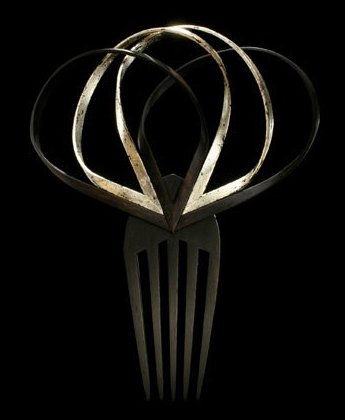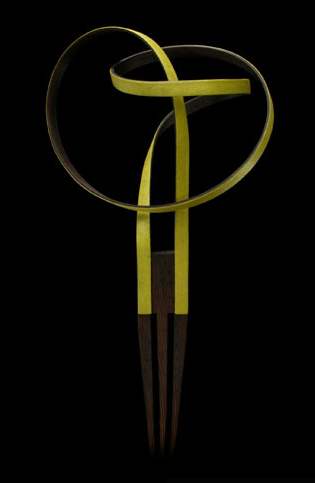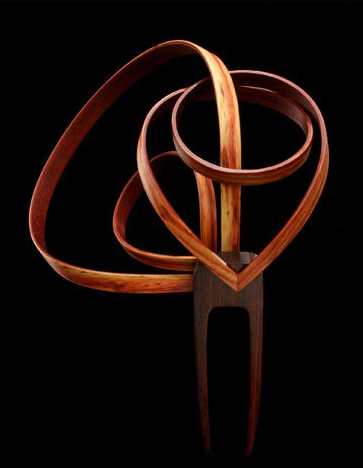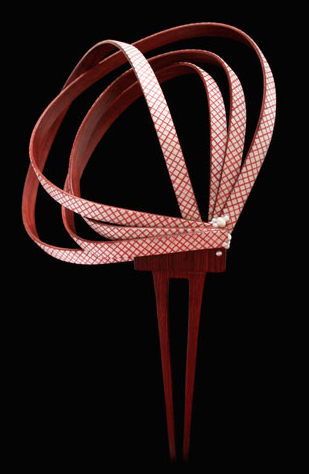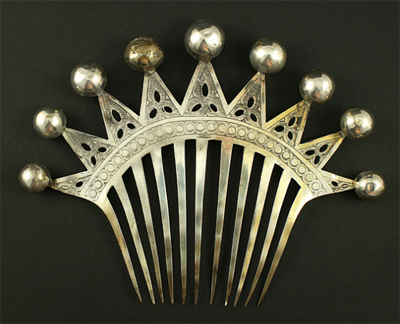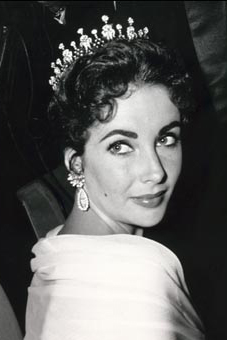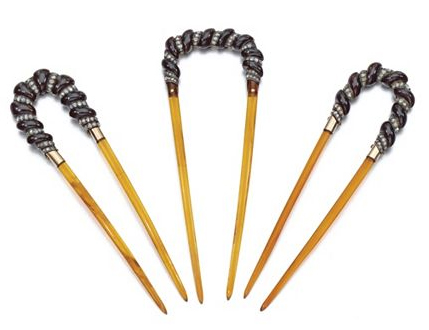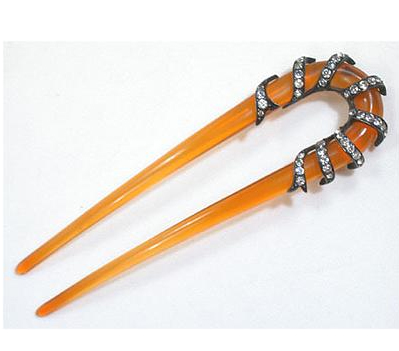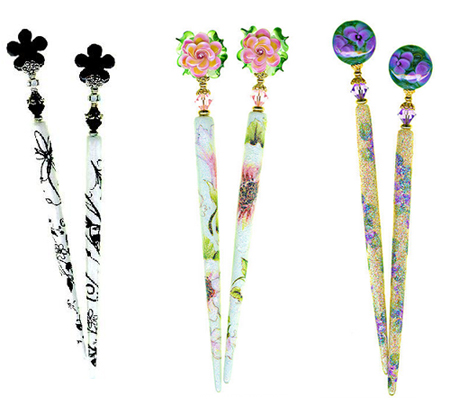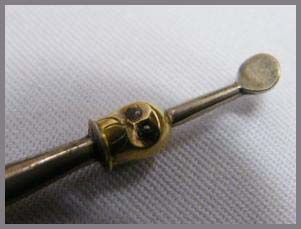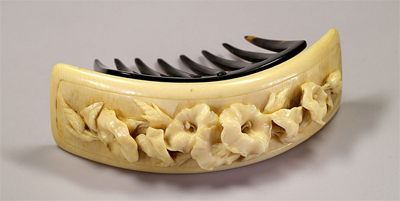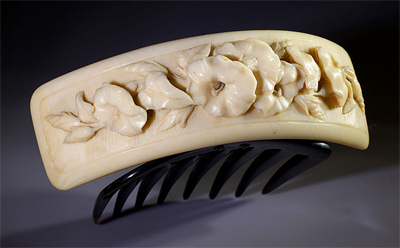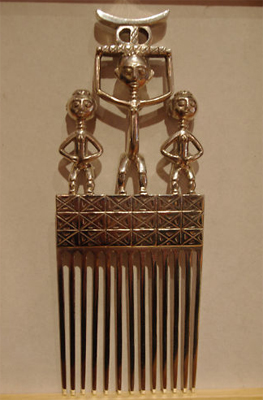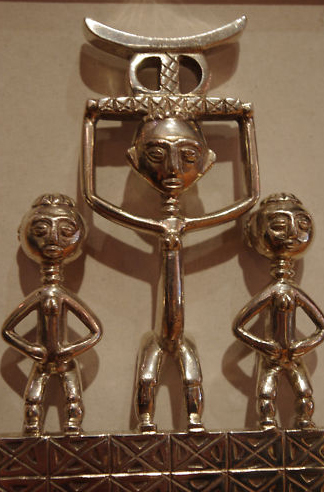By the Creative Museum:
She sculpts different woods into hair-comb heaven. Describing her philosophy, Ms. Beauchemin says, “I strive to explore fine woodworking, to develop a personal approach that will enhance the riches and nuances of the matter. I shape solid woods and veneers in symbiosis with other natural materials such as mother-of-pearls, stones, metals and fibres. Hair ornaments are the medium through which I explore. Mythical, symbolical and sensual objects, hair combs and pins offer a vast array of conceptual, aesthetic and technical possibilities. Through my approach, I wish to explore notions such as balance, combination of materials and visual poetry.”
